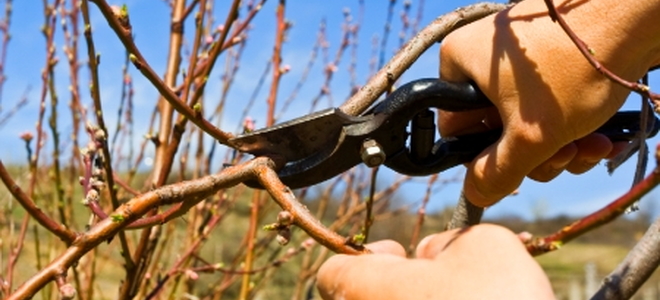



Spring rainstorms that come through during late April and the month of May tend to move the pathogen around that causes fire blight. Avoid pruning if there is a chance of precipitation within the next three days after pruning.Sharp clean blades that slice through branches make the work of pruning easier, and in my own personal experience, I have fewer aching joints when the pruners are in good shape. Using dull and rusty tools to prune is not going to give you clean cuts, and makes the work of pruning harder on you as well. Our goal with any of the pruning locations is to make a good clean cut without any fraying of the branch and make it as easy for the tree to heal over as quickly as possible. On the other hand, if you leave a stump, it will take many years and sometimes even decades for the tree to grow over and cover the stub that you have left. Cutting too close or damaging the branch ridge/collar will make it difficult for the tree to grow tissue and bark over the opening that you have created by pruning the tree. Do not leave stumps, but do not cut too close to the bud point or to the branch collar and branch ridge.Also during that time period, we have almost no insects out to possibly damage and infest our trees. The trees are still dormant in our area at that time of the year, and since the temperatures are still cold, we normally have a lower incidence of diseases in the environment that can infect our fruit tree since the pruning cuts are entry ways for diseases to enter the tree. While this time frame is best for the tree, it also helps us as there is less snow to have to stand in while pruning. The best time to prune is during late February through the entire month of March. As a general rule, pruning in late winter to early spring is the best time frame. It can remove leaves that help to not only supply the tree with sunlight, but protect the tree from too much sunlight as well. Don’t prune branches in the spring or summer.Focus on pruning higher branches to evenly distribute sunlight to lower ones.Leave small horizontal branches intact for future fruiting growth, but cut longer ones to prevent short-term fruiting.Pruning vertical branches helps to encourage vegetative growth, pruning horizontal ones helps to encourage fruiting growth.You should prune young trees fairly heavily for the first 3 years so that they distribute less nutrients for fruiting growth and more for vegetative growth.X Trustworthy Source Virginia Cooperation Extension Publications and Educational resources from Virginia Tech and Virginia State University Go to source

Prune lateral branches (branches that grow out from the scaffold branches) back to the branch collar using cuts made at 45° angles.


 0 kommentar(er)
0 kommentar(er)
